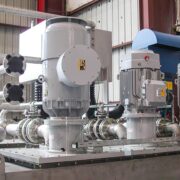We can all use a little help. Predictive analysis is the art of providing detailed information that could be used to inform important decisions. It’s not always an easy task! There are many ways to implement this technology and it can be utilized in many areas, from human resources management to advertising.
Table of Contents
1. Acquiring New Customers
To acquire new customers, you can use predictive analysis to show the type of person based on their previous purchasing actions. Not only will this help you understand how your marketing mix can gain new customers, but it will also give you valuable insight on how to make your CRM more effective and efficient!
2. Segmenting and Targeting Your Audience
Understanding who your customers are and why they do what they do is essential for any company. The first step is to segment your audience into groups with similar characteristics, like behavior traits or demographics. Once you know your customer, you can develop specific marketing strategies that earn trust from a particular segment.
3. Creating the Perfect Customer Experience
By understanding customer behavior, you can create a strategy to accommodate your customers’ actions. By recognizing their behavior, your company can create a tailored experience that will keep them returning to your brand. For example, if you know that one of your customers makes two online purchases before making an offline purchase, you can offer them huge discounts to entice them to purchase their local brick-and-mortar store.
4. Improving Customer Satisfaction
Satisfied customers are loyal customers. They may have forgotten who gave them the gift or forgot why they bought your product, but they will still come back to you. You can use predictive analytics to help your customers understand what they expect from a purchase. When your customers are happy, you can keep them coming back, which increases their loyalty and repeat purchases.
5. Using Predictive Analysis to Improve CRM
You can use predictive analysis and data science to find new ways to improve customer relations management. Using predictive analytics and big data, you can develop new features that will help solve your customer’s problems. For example, if you know that a customer is always asking for information about how the product was shipped, you can create an email template that provides more information about how the product was shipped.
6. Lead Scoring Prediction
Lead scoring is a way to use predictive analysis of past behavior to predict future sales. This is a technique that is commonly used by sales and marketing departments. By evaluating a customer’s behavior, you can assign point values that indicate the likelihood of an individual purchasing in the future. Once you have this data, you can market products using accurate lead scoring models.
7. Predict Your Customer Lifetime Value
There are many ways to use big data to improve customer experience. One way is through a customer lifetime value (CLTV). CLTV is a useful metric that helps companies determine which customers are most profitable. Using a predictive model can adjust marketing spend to achieve the maximum profit. For example, if a customer’s CLTV is $25, she will be more likely to purchase a $50 product than one that costs $15. Therefore, spending $50 for this customer is more profitable than spending $15 for her.
When you combine the science of predictive analytics with human intuition, you can start to understand your customer’s behavior better than ever before. This understanding will help you provide new and increased value to your customers by making accurate predictions.


















Comments